30+ Very Helpful Tips When Buying or Building a House for Your Pet
Do you think it’s difficult to build a new home for your pet? It turns out that it’s both easy and cost-effective. We’re here to guide you through the process and share some clever tips to ensure your pet’s comfort and warmth. Keep reading, and your furry friends will undoubtedly be grateful.
1. Appropriate Size

Choosing the size of a pet’s home depends on various factors such as the type and size of the pet, their activity level, and the available space. Here are some general guidelines:
- Measure your pet from nose to tail and from the top of their head to the ground when they stand. Use these measurements as a starting point.
- If you have a puppy or kitten, consider their potential adult size. You may need to select a larger space that accommodates their growth.
- Active pets may require more space to move around comfortably. If your pet is energetic, ensure their home allows for exercise and play.
- If you have multiple pets, ensure there is enough space for each to have their own area.
- Consider whether the home is for indoor or outdoor use. Outdoor homes may need to be larger to provide protection from the elements.
- The home should allow your pet to stand, turn around, and lie down comfortably. It should also have proper ventilation and be safe from hazards.
2. Suitable Materials

Choose durable and easy-to-clean materials. Treated wood, sturdy plastic, or specific outdoor materials are reliable options. Ensure that the materials are non-toxic and safe for your pet, as some materials can be harmful if ingested.
- Choose materials that are sturdy and can withstand your pet’s activities. For outdoor homes, materials should be weather-resistant.
- If the house will be outdoors or in a colder climate, consider insulation to keep your pet warm during colder seasons.
- Avoid any materials that could be harmful if chewed or ingested.
- Select materials that are easy to clean and maintain. You’ll want to keep your pet’s living space clean and hygienic.
- Consider your budget when choosing materials. There are various options available at different price points.
3. Insulation
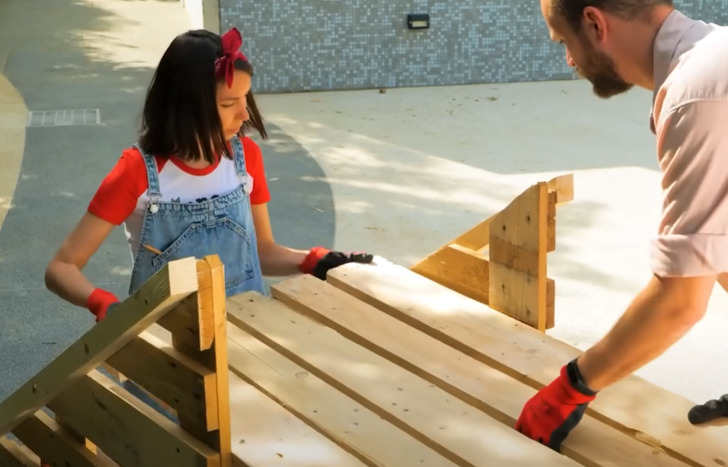
Insulation in pet houses plays a crucial role in maintaining a comfortable and healthy living environment for your pets. It helps regulate temperature, provides comfort, reduces energy consumption, and contributes to the overall longevity and safety of the pet house.
- Thermal insulation will help maintain warmth inside during winter and keep it cool during summer.
- Consider using insulating materials like polystyrene foam or mineral wool.
- A well-insulated pet house is less susceptible to weather-related wear and tear. It can last longer and require fewer repairs or replacements.
- Insulation materials are often chosen for their fire-resistant properties, which can enhance the safety of your pet’s house.
4. Ventilation
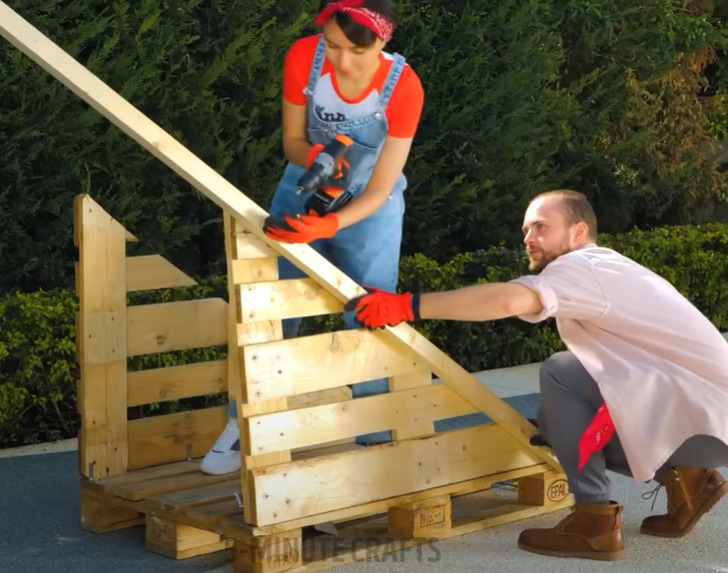
Proper ventilation is essential to create a safe and comfortable living environment for your pet. It helps maintain air quality, regulate temperature, and prevent moisture-related issues, ensuring your pet’s well-being.
- Install vents or small openings near the top and bottom of the pet house to create cross-ventilation. These openings should be adjustable, allowing you to control the airflow as needed.
- Use screens or filters over ventilation openings to prevent insects, pests, and debris from entering the pet house.
- Consider the prevailing wind direction and place ventilation openings accordingly to promote the flow of fresh air.
- Clean and inspect ventilation openings regularly to ensure they are not blocked by dirt, debris, or pet hair.
5. Elevation
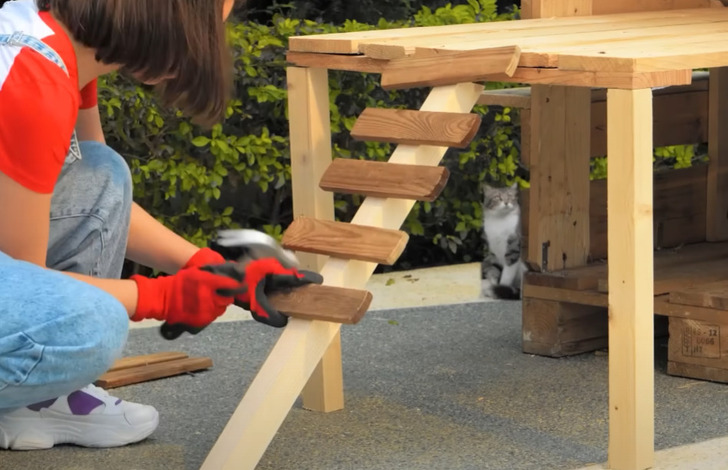
When elevating a pet house, consider using appropriate materials for support, such as wooden legs or a platform. Ensure that the structure is stable and secure to prevent accidents or collapses. Additionally, the height of the elevation should be suitable for your pet’s size and mobility, allowing them to enter and exit comfortably and serves several important purposes:
- Protection from Ground Moisture: Elevating the pet house keeps it off the ground, which is crucial for preventing moisture from seeping into the structure. Moisture can lead to rot, mold, and mildew, which can be harmful to your pet and compromise the integrity of the house.
- Temperature Regulation: Elevating the house allows for better air circulation underneath, helping to regulate the temperature inside. This is especially beneficial in hot weather, as it helps keep the interior cooler. In colder weather, elevation reduces heat loss to the ground.
- Insulation: Elevating the pet house can create an air gap between the floor and the ground, providing additional insulation. This helps maintain a more stable and comfortable interior temperature.
- Pest Prevention: Raising the pet house makes it less accessible to ground-dwelling pests such as rodents and insects. It can help protect your pet and their belongings from unwanted intruders.
- Ventilation: Elevation can improve the ventilation of the pet house by allowing air to circulate underneath, which is particularly important for fresh air intake and preventing the buildup of odors.
6. Sturdy Roof
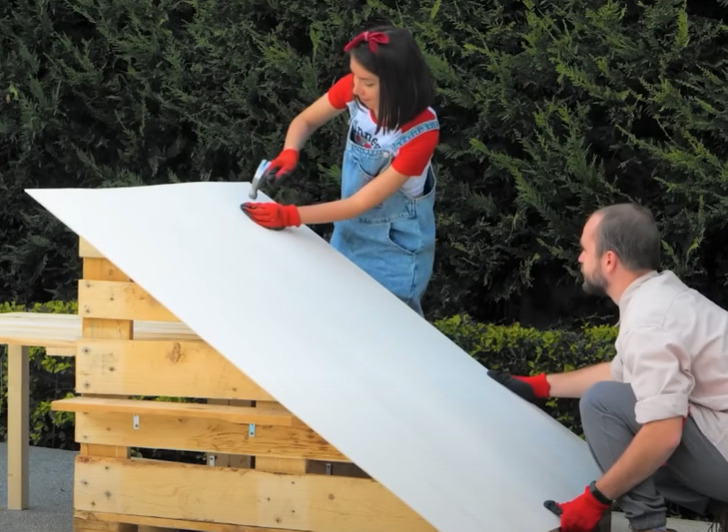
When constructing or selecting a pet house, ensure that the roof is made of durable and weather-resistant materials, adequately insulated, and securely attached to the frame. Regularly inspect the roof for signs of wear or damage, and perform necessary maintenance to keep it in optimal condition for your pet’s safety and comfort.
- A waterproof roof is crucial to keep your pet dry during rain.
- A sloping roof will help water runoff. Opt for a sloping roof to allow rainwater to drain effectively and avoid accumulation on the surface.
7. Entrance/Door
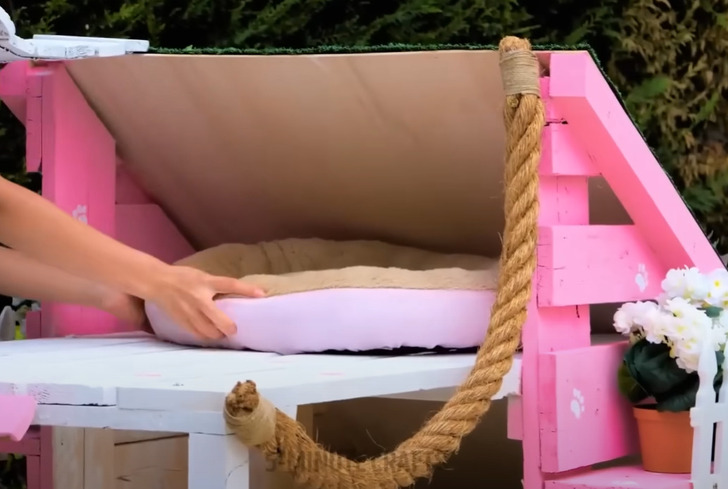
The entrance should be designed to provide a safe and comfortable entry and exit for your pet, while also protecting them from the elements. It’s important to consider your specific pet’s size, mobility, and any specific needs they may have when designing or selecting a pet house entrance.
- The shape of the entrance can vary depending on the design of the pet house. For most pets, a simple rectangular or arched entrance works well. Avoid sharp edges or protruding elements that could cause injury.
- Consider the height of the entrance above the ground. It should be easily accessible for your pet to step in and out without difficulty. If the pet house has a raised floor, ensure that there is a smooth transition or ramp at the entrance to prevent tripping or stumbling.
- The entrance should be designed to provide some weather protection. For example, a small awning or roof over the entrance can help keep rain and snow from entering the interior.
8. Security
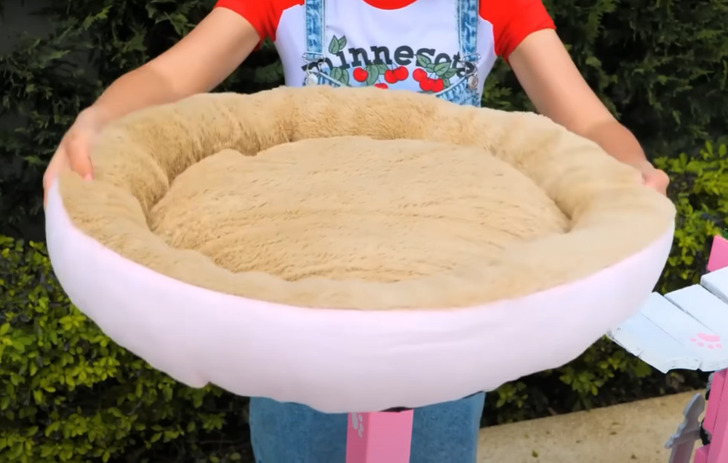
Safety in a pet’s house is essential to protect your pet from the elements, wildlife, escape risks, and health hazards. It contributes to your pet’s comfort, health, and overall well-being, making it a top priority when designing or selecting a pet house.
- Position the pet house in a sheltered location, protected from elements like wind and rain, allowing your pet to have a view of its surroundings.
- Make sure it’s in a safe location, free from potential dangers.
- Ensure that the pet house is safe for your pet. This includes checking for sharp edges, loose screws, or any hazardous components your pet might access.
9. Personalization
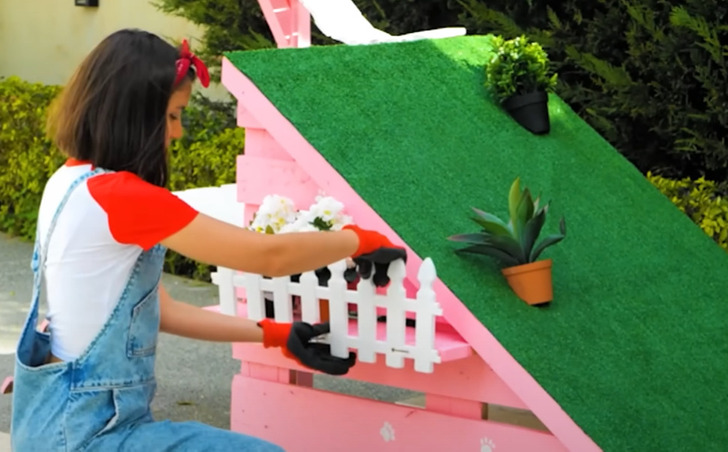
Consider your pet’s specific needs when designing the house. For example, a large dog may need a wider entrance, while a cat might prefer a smaller entryway and an elevated platform to observe its surroundings. Personalizing a pet house can make it more unique and appealing to both you and your pet. Here are some ideas on how to personalize a pet house:
- Add a nameplate with your pet’s name to the exterior of the house. You can use decorative letters, stencils, or custom-made signs.
- Paint the exterior of the pet house in your pet’s favorite color, or use patterns and designs that match your home’s decor.
- Add decorative trim, such as molding or colorful borders, to enhance the aesthetics of the pet house.
- Use stencils to paint or create designs on the exterior or interior walls of the pet house. Consider paw prints, bones, or other pet-related motifs.
- Apply window decals or stickers with fun and playful designs to the windows or walls of the pet house.
- Hang photos or artwork of your pet on the walls of the pet house to create a familiar and welcoming environment.
10. Decoration and Furniture
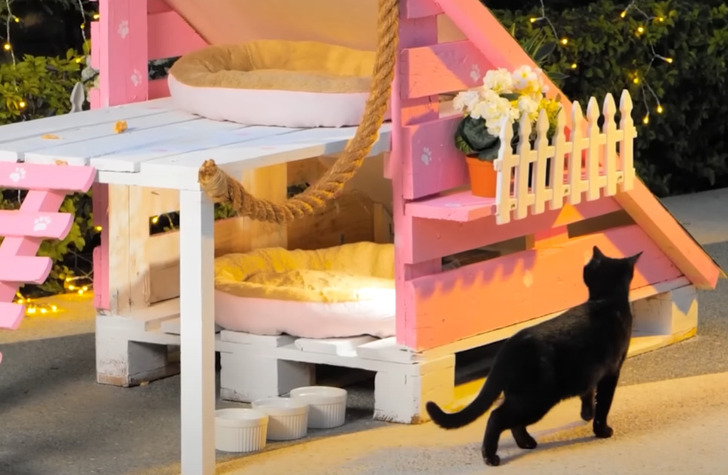
Consider your pet’s preferences and comfort when decorating their house. Ensure that any added decorations or furnishings are safe and non-toxic for your pet. Here are some ideas on how to furnish a pet house:
- Personalize the interior with custom-made cushions, bedding, or blankets featuring your pet’s name or a fun pattern.
- Include pet-sized furniture or accessories inside the house, such as a mini sofa, rug, or pet-specific decor.
- If you have carpentry skills, consider building custom additions to the pet house, like a porch, balcony, or window box for flowers.
- Place your pet’s favorite toys or playthings inside the house to make it feel like a fun and inviting space.
- Add battery-operated LED lights or fairy lights to create a cozy and inviting atmosphere inside the pet house.